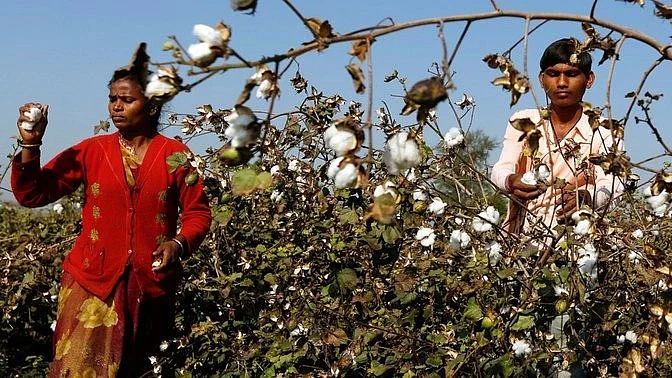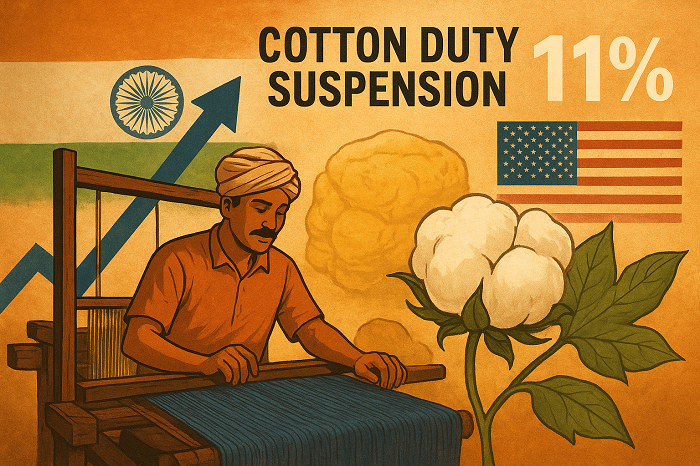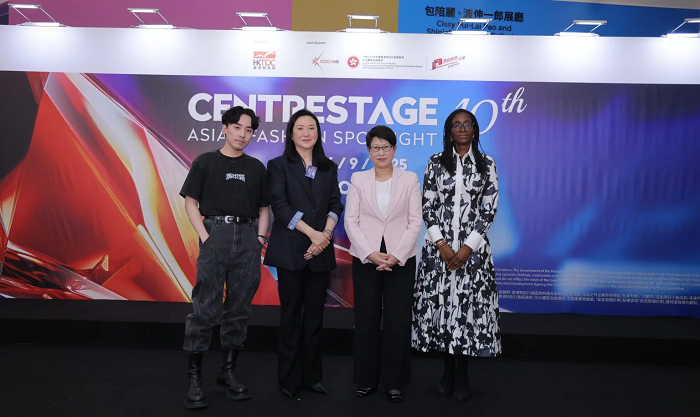Alpaca fiber, both from Peru and Australia, is in high demand in the luxury apparel market across the world. This is mainly due to its natural range of colors and other environment-friendly qualities.The Peruvian Society of Registered Alpaca (SPAR) recently exported 7.1 ton of high quality alpaca fiber worth $1,25,000 to Italian fabric manufacturing company FratelliPiacanza, known for manufacturing high-quality garments.
Australian alpaca fiber is extremely soft as compared to other fibers and therefore is suited for luxury next to skin wear garments. The vibrant range of natural colors of alpaca fibers provides it a clear product differentiation from other fibers as there is no need for use of harsh chemicals during the dyeing process. The fact that alpacas are often reared in welfare friendly conditions also carries a distinct advantage.
An alpaca is a smaller version of the animal llama. Alpacas graze at elevations of 10,000 to 14,000 ft on the Peruvian Andes. Their thick, sumptuous coats grow naturally in over 40 shades-from ivory to black, with all the greys and browns in between. Lighter shades of the fleece also take dyes beautifully. Alpacasare tended to by Andean herdsmen, who shear them every other year at the onset of the rainy season. The yield is about eight pounds of fleece per animal. Most of the fleece sheared from the first clip is classified as baby alpaca.
The apparel industry in Bangladesh needs to improve its image for guaranteeing the country's long-term prosperity. The collapse of Rana Plaza in Dhaka in April 2013 sent shockwaves through the textile and clothing industries. More than 1,100 lives were lost in the incident, and Bangladesh's reputation as a reliable low- cost location for clothing suffered a severe blow in the eyes of consumers and major brands.
Some western buyers have cancelled orders in the aftermath of the Rana Plaza collapse and placed them elsewhere. Moreover, a number of Bangladeshi factories have been blacklisted. There is a danger that retailers and consumers will view cheap clothing from Bangladesh as coming at too high a cost in human terms, and that they will prefer other countries where costs are low but similar tragedies have not occurred -- such as Cambodia and Vietnam.
Sales in the US import market could be negatively affected following a decision by the US government to suspend Bangladesh's preferential duty treatment under the Generalised System of Preferences (GSP) scheme, and Bangladesh's preferential access to the EU could also be revoked if the government does not take necessary steps to significantly improve building safety standards and overall labor conditions in the country.
The government and major brands need to work together with suppliers to change the apparel industry into one in which there are safe factories, decent wages and respect for workers' rights. However, gains will only be sustainable if the added labor costs are absorbed by buyers as well as manufacturers.
The apparel sector has set itself a target of $5 billion in 2015 through garment exports.“A further $1 billion is targeted from the emerging new markets in China around that time, together it will make the apparel sector worth nearly $7 billion before the end of 2020,” Tuli Cooray, Secretary-General of JAAF said. President Mahinda Rajapaksa in his capacity as Finance Minister recently released a gazette notification titled ‘Commercial Hub Regulation No: 1 of 2013’, which will be applicable to all new enterprises established or incorporated in Sri Lanka.
Speaking about its benefits the apparel industry could accrue under this new regulation, Cooray said that the sector alone would anticipate an additional foreign exchange turnover of $1billion by year 2018.“We will mobilize all our existing resources to promote the new opportunity that has been opened and significantly improve our participation in reinforcing the national economy”, the Secretary-General added.
“The JAAF has played a vital role in the formulation of new regulation and actively participated in most of the consultative processes capitalizing on the government's ‘Open Forum’ policy where input from all shades of stakeholders were considered before the CHR was introduced,” he added. When the Bill for the introduction of Commercial Hub regulation was introduced in Parliament, it was challenged in the Supreme Court through a petition in the mid part of this year and the JAAF collective stood by the Bill and intervened as an interested party and cited its implementation justifiable as it was in the best interest of the country.
“The five year Strategic Plan of the JAAF which was rolled out in 2010 has outlined the significance of enhancing its present role as a manufacturing and supplying garments to a totally integrated solution provider for the international apparel sources, facilitating end to end solutions starting from research and development, supply chain services, logistics etc. Three years on, our achievement is significant,” he stated.
Argentina’s Global Compact Network and Sustainable Textile Center has launched the Code of Conduct and Handbook of Textile and Fashion.The textile and fashion industry is important for Argentine economy, but from the point of view of sustainability, this industry often operates at the expense of the environment and social factors.
The code was developed by the Nordic Fashion Association and the Nordic Initiative Clean and Ethical (NICE) in partnership with the United Nations Global Compact (UNGC). The initiative for preparing a code, specifically for the textile and apparel sector, was proposed by the UNGC in May 2012 at the Copenhagen Fashion Summit in Denmark.
Many companies recognize the need to collaborate and partner with governments, civil society, labor and the United Nations. The UN Global Compact is a strategic policy initiative for businesses that are committed to aligning their operations and strategies with 10 universally accepted principles in the areas of human rights, labour, environment and anti-corruption. This can help ensure markets, commerce, technology and finance advance in ways that benefit economies and societies everywhere.
With over 10,000 corporate participants and other stakeholders from over 130 countries, the Global Compact is the largest voluntary corporate responsibility initiative in the world.
Bangladesh is about to finalize a deal to import cotton from Uzbekistan. This will ensure the supply of 200,000 tons of cotton annually for the Bangladesh textile industry.Uzbekistan is the sixth largest cotton producer in the world with 4.6 million bales produced in 2011. The two countries already exchanged the draft of the memorandum of understanding (MoU) which is now under scrutiny.
The draft MoU states that both parties will cooperate with each other for direct delivery of raw cotton from Uzbekistan to Bangladesh on a regular basis. The Uzbek state-run foreign trade companies namely 'Uzprommashimpex', 'Uzinterimpex' and 'Uzmarkazimpeks' will supply the cotton to any importer registered in Bangladesh.
About 35 per cent of the total cotton imports to Bangladesh is from Uzbekistan. Bangladesh and Uzbekistan had agreed for cooperation on various bilateral trade issues including cotton supply in a meeting of the Joint Working Commission for Trade and Economic Cooperation held in Tashkent in May 2012.
Bangladesh is also holding talks with India for getting 1.5 million bales of cotton a year. The country's yearly requirement of cotton is nearly 4.0 million bales, of which 0.12 million bales are produced locally. Rest of the demand -- nearly 98 per cent -- is being met by importing it from various countries.
Bangladesh’s export earnings witnessed a robust 24 per cent rise in July 2013 compared to July 2012, thanks to a significant growth in the shipment of readymade garments.The garment sector witnessed negative growth in July 2012 but one year later, in July 2013, the growth has turned positive. In July 2012, export growth was only 4.26 per cent against the earnings in July 2011.
Government officials and garment manufacturers have termed the growth as excellent considering the recession and recent incidents in the apparel sector that have drawn huge local and international attention. Bangladesh has sent trade delegations to new markets like China, Japan, Africa and Latin America to reduce the dependency on the European Union and US markets. It’s also focusing to diversify into products like leather, shrimp and light engineering products.
However the low-cost country retains its allure for cost-crunching global retailers despite deadly incidents. Duty-free access to western markets and low wages has helped make Bangladesh the world’s second-largest apparel exporter after China. From spinning to weaving, from knitwear to leisurewear and high street fashions, the textiles and clothing industry is Bangladesh’s biggest export earner. The country’s garment industry employs four million workers and generates 80 per cent of Bangladesh's export earnings.
Bangladesh’s historic state-owned Muslin Cotton Mills has reopened in Gazipur district after the ownership was transferred to Masers Reefat Garments Company.Production was stopped at the largest muslin cotton mill in Asia in 1990 for its failure to pay wages and salaries to its 2,885 workers amid serious mismanagement.
Set up on 100 acres of land on the bank of river Shitalakhya in Kaliganj in 1952, the mill once had three sections — spinning, looming and dyeing.Before its closure, the company used to make fabrics and yarn out of cotton.Speaking at a function to reopen the closed textile mill,Abdul LatifSiddiqui, Minister of Jute and Textiles, said after 24 years of closure the government took an initiative to reopen the historic cotton mill.The Muslin Cotton Mills would generate employment opportunities for 25,000 people in the Gazipur district.
About 50 Turkish textile factories are relocating to Ethiopia. They will be housed in an industrial zone. One such company is Ayka Addis. This is a 25-year-old Turkish international garment firm in close contact with all major garment manufacturers in Turkey. Ayka inaugurated its factory at a cost of $140 million near Addis Ababa, in 2010, creating jobs for more than 10,000 people. It has the capacity to export textile products worth $100 million per annum.
The relocation is expected to create $2 billion worth of export revenue per annum and more than 60,000 job opportunities in Ethipia. The Ethiopian textile and clothing industry has experienced a major expansion drive and several leading retailers are now sourcing their textile and clothing requirements from the country. The list of retailers sourcing from Ethiopia include retailers like Tesco, Primark and H&M. Presently around 10 per cent of Ethiopia’s textile and clothing exports are to the UK.
The government has set a target of attracting around $1.6 billion in foreign direct investment by 2016 to facilitate the construction of around 200 new textile and clothing units. For expansion, the industry would mainly focus on increasing domestic cotton output. Ethiopia has about three million hectares of land suitable for cotton cultivation.
A recent report‘Road to 2025: Textile and apparel sector report’, China and India will be the major growth centres for apparel consumption by 2025. The combined size of the Chinese and Indian apparel markets is slated to become bigger than that of US and European Union (EU).“The combined apparel market size of China and India will become $740 billion by 2025, and is expected to surpass the combined market size of US and Europe, which will be $725 billion in 2025,” states the report.
At present the size of apparel market in China and India is estimated at $150 billion and $45 billion, respectively. Both have shown robust growth, despite global uncertainties and slackened demand, says the report.
From 2007 to 2012, the Chinese market posted an annualized growth of 15 per cent whereas the Indian market registered a somewhat lower growth at 12 per cent. However, both have performed better than the other major consumption regions (US, EU and Japan) where the economic conditions led to lower growth in demand.
“Asia has already emerged as the largest manufacturer-supplier hub for textile and apparel products to the world, and the region is on the verge of entering into a new phase wherein its own consumption of textile and apparel products would become large,” the report states.
It goes on to say the key reasons for apparel consumption in the two countries to grow are high economy growth, and consumer income, market development supported by expansion of domestic brands, which have the bandwidth and exposure to go deep into the markets, and high growth of online retail in these countries.
The report also suggests that the consumption level in countries would grow, as the Chinese consumer’s changing preference to buy more for fashion than replacement purpose would increase and Indian consumer’s growing exposure to organized retail and branded merchandise would also increase.
Chinese textile manufacturers are competing to secure import quotas for well-priced and high quality cotton, as the government pressures them to use more expensive lower quality domestic supplies.The spread between Chinese and imported cotton has hit China's textile industry hard. It’s one major reason Chinese manufacturers are becoming much less competitive in the global market.
In January, the Chinese government imposed a 3:1 rule on manufacturers. By which they had to use three tons of Chinese cotton to secure quotas to buy one ton of imported cotton. The quality of Chinese cotton is much lower than that of imported cotton, which generates more losses in production.
The goal is to reduce the size of the eight million tons of stocks the Chinese government has bought to assure sufficient local supplies. The policy is already weakening the price of China-made cotton, but with farmers demanding high prices, it is still higher than foreign cotton.
The International Cotton Advisory Committee has warned cotton prices are expected to rise in the 2013-14 season, despite cotton stocks heading towards a new high. The inter-governmental group blamed stockpiling by the Chinese government, and the expected tightening of stocks outside of China.
- 1
- 2
- 3
- 4
- 5
- 6
- 7
- 8
- 9
- 10
Cotton at a Crossroads: Geopolitics, trade shifts, and the global balancing act
The global cotton market in 2025 is passing through a period of shifting trade relationships, geopolitical tensions, and the rising... Read more
German textile and fashion industry grapples with persistent economic headwinds
The German textile and fashion industry continues to pass through a challenging economic situation. An anticipated recovery remains elusive amidst... Read more
French consumers blinded by fast fashion's allure: Study
A recent study on French consumer habits in the fashion industry throws up a concerning picture, suggesting that the allure... Read more
The great retail shift in the US, private labels emerge as new brand leaders
Once a humble alternative for budget-conscious shoppers, private labels often called store brands have stealthily evolved into a commanding force... Read more
Indian textile sector braces for increased Chinese imports amid diplomatic thaw
Following high-level diplomatic engagements between Indian External Affairs Minister S. Jaishankar and Chinese Foreign Minister Wang Yi, a new chapter... Read more
The stretch revolution, spandex redefining fabric weight and cost
The addition of spandex yarn in the textile industry has changed the sector in many ways. While traditional metrics like... Read more
Weaving Relief: India's cotton duty suspension a lifeline for textile industry a…
In a move that has sent a wave of optimism through its embattled textile sector, the Indian government has temporarily... Read more
From Paris to Panipat: Can India help solve Europe’s textile recycling crisis?
In the quiet warehouses of northern France, bales of discarded jeans, shirts, and dresses pile higher each week. For French... Read more
Centrestage celebrates a decade of global fashion in Hong Kong
The Hong Kong Trade Development Council (HKTDC) will host the 10th edition Asia’s premier fashion gala – Centrestage in partnership... Read more
India, China, and Brazil to lead global cotton market in 2025-26, says ICAC proj…
As per the August 2025 ‘Cotton This Month’ report by the International Cotton Advisory Committee (ICAC), global cotton production is... Read more












